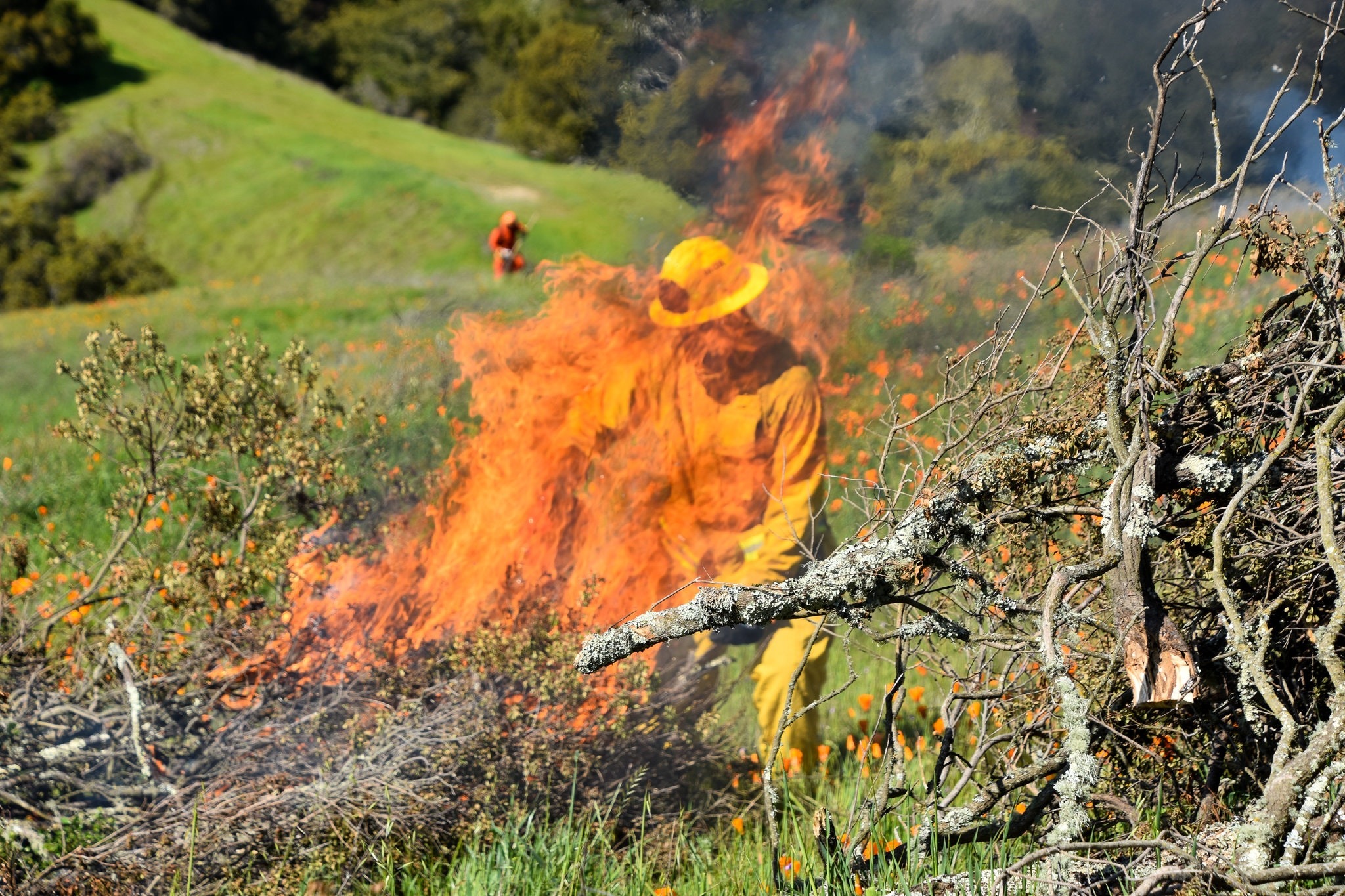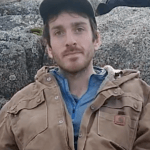Will Smoke From Controlled Burns Hurt Covid-19 Patients?

Firefighters conducting a two-day prescribed fire project with the Moraga-Orinda Fire District and the Cal Fire crew from Delta Conservation Camp in Contra Costa County in April. Anne Daugherty
In the mountains of California, snow is melting, the days are ticking closer to fire season and officials responsible for fighting wildfires face an agonizing choice: Exacerbate the current crisis, or pile risk on to the next one.
This is the season when California’s forests are thinned out with controlled burns to reduce the devastation that has become all too common during the fall wildfire season. But the smoke generated by setting fire to thousands of acres this spring could be lethal for Covid-19 victims fighting for every breath.
While thousands have recovered, hospitals are caring for nearly 4,000 Covid-19 patients, with at least 1,100 in intensive care. Untold numbers more are suffering at home. Worse still, the effects of heavy smoke — pneumonia, asthma, bronchitis — are felt most acutely by older people with underlying health problems, the population most at risk from Covid-19.
“It’s a hard call,” said Dr. Mary Prunicki, who researches air pollution at Stanford University. “It does put smoke into the air. But the downside is, ‘Are we going to have bigger wildfires in the fall?’”
Forestry officials have taken divergent approaches to this dilemma.
The U.S. Forest Service, which oversees about 57 percent of the forest lands in California, halted its prescribed burns throughout the state for six weeks. When the decision was announced in March, a spokesman said that postponing burns “will prevent any effects from smoke that might further worsen conditions for those who are at risk in our communities.”
Yet a different branch of the federal government, the Bureau of Land Management, which manages more than a million acres in California, did not halt its controlled burns, nor did Cal Fire, the state agency charged with combating wildfires on land not under federal control.
“What is Covid-19? A respiratory issue,” Scott McLean, a spokesman for Cal Fire, said. “We’re not naïve to that, but we have to provide for the well-being of the public.”
The contradictory policies reflect an absence of coordination between the agencies most directly responsible for fighting wildfires in California. According to Mr. McLean, the Forest Service did not consult with Cal Fire on its decision to suspend controlled burns. “We found out when the news release came out,” he said.
But the dueling approaches also reflected starkly different calculations of risk.
Forest Service officials said they were concerned that assembling a work force to conduct the burns would expose traveling employees to the virus and potentially contribute to its spread. They also raised doubts about how their fire crews could tend to burns while also abiding by social distancing directives.
They said they would continue to use other methods — such as removing brush by hand and with heavy machinery — that reduce combustible forest fuel without generating smoke.
On Friday, however, the Forest Service changed course and announced it would resume controlled burns in California “as conditions and resources permit.”
“We will continue to prioritize the health and safety of communities and firefighters during this global and national emergency, and will also conduct prescribed fire where feasible as an important tool to protect communities,” Randy Moore, a Forest Service official, said in a statement.
Cal Fire plans to burn roughly 3,200 acres over the next two months. Its risk calculations have been influenced by recent catastrophes such as the 2018 Camp Fire, which killed 86 people in Paradise and surrounding towns, and last fall’s wildfires, which left huge portions of the state without power for days at a time.
At the same time, officials at Cal Fire said they were taking steps to limit the health effects from their controlled burns, such as analyzing wind conditions to make sure smoke will not blow toward hospitals. Each burn, which can range in size from a few acres to several hundred, also requires advance approval from local air quality management boards, which in turn typically consult with local public health agencies.
Officials from several air quality boards and public health agencies downplayed the harm that controlled burns could inflict on those infected with Covid-19. “If they’re fighting for every breath, they’re in the hospital and not exposed to the smoky air,” said Lisa Almaguer, a spokeswoman for the Butte County public health department. “If they have moderate to severe symptoms then they’re home and in bed.”
State and local officials repeatedly argued that whatever the risks of controlled burns, failing to thin forests today could create conditions for a far greater calamity come fall. Dave Winnacker, chief of the Moraga-Orinda fire district east of Berkeley, worries what would happen if a failure to do adequate controlled burns means more intense wildfires in a few months. If Covid-19 is still a menace, what will that mean for the thousands of firefighters assembled to battle those wildfires, often in close quarters, often to the point of exhaustion? How will those firefighters evacuate thousands of residents while adhering to social distancing?
“Covid-19 has crowded out every other thing that people have the capacity to worry about,” he said. “But that doesn’t mean the fire season is going to take a year off.”
Many residents of California know all too well what it is to suffer ongoing respiratory problems from fire seasons past. Laura Whitaker, a former resident of Paradise, said her lungs have never been the same since she survived the Camp Fire. “I remember feeling that my lungs were full and that I couldn’t breathe,” she said. “It felt like drowning.”
In the years since, Ms. Whitaker said she could tell from her lungs when controlled burns begin anew. “The smoke, definitely, it gets to me pretty badly,” she said. And having just gotten over a bout of pneumonia, she said she was afraid this year’s burns will make her more vulnerable to the novel coronavirus. “When I heard that it affects the lungs, it puts the fear into you,” she said.
Her fears are well grounded, experts said. “As you batter the lungs, which is what’s happening when you breathe wildfire smoke, the defense mechanisms get overwhelmed,” said Katharine Hammond, a professor of environmental health sciences at the University of California, Berkeley.
“There’s a big difference if there’s a little bit of smoke or a lot of smoke,” she added. “Those are trade-offs that need to be carefully thought through.”



